4- HOW TO BEGIN YOUR MEDITATION PRACTICE
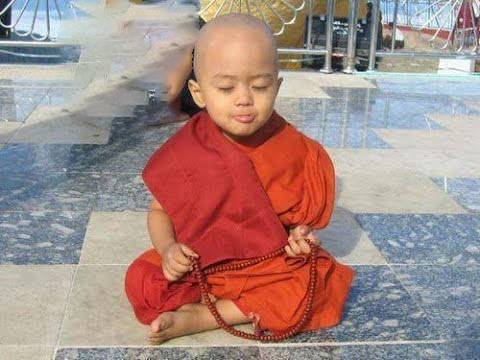
Stage One: Establishing a Practice
The basic practice used in this book is quite simple.
Direct your attention toward a well – defined meditation object.
Whenever your attentions slips, redirect it back to that object.
Repeat this as often as needed.
Rather than jump right in, though,
you’ll start with two preliminary practices to help prepare your body and mind
for a smooth transition to the meditation object.

Six – Point Preparation for Meditation
I recommend the following Six – Point Preparation to new students.
You should prepare for meditation just as you would for other activities,
by thinking and planning beforehand.
Memorize these Six Points and go through them as soon as you sit down.
You can even review them in your head
while on the way to your meditation spot.
They are:
motivation, goals, expectations, diligence, distractions, and posture.
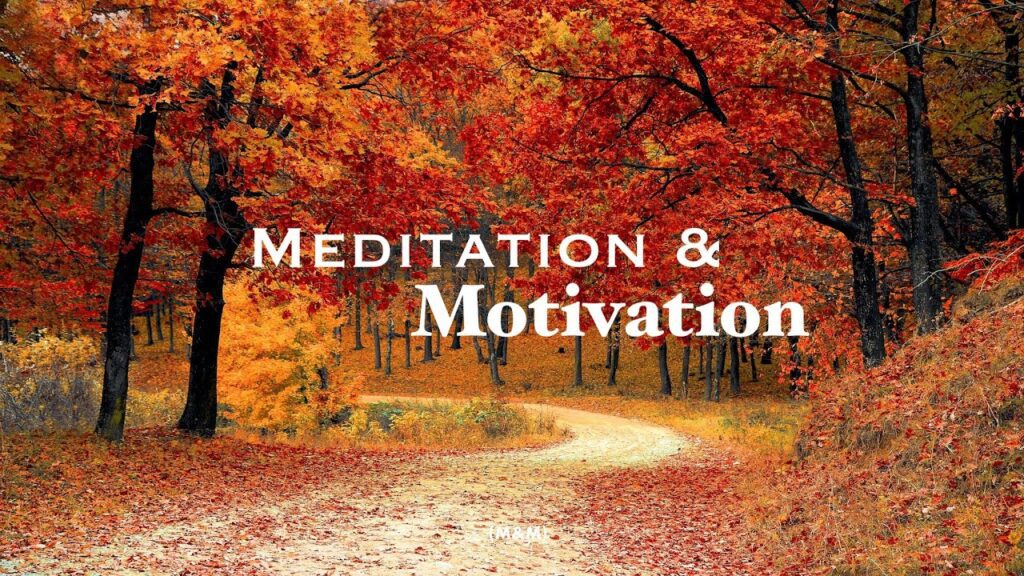
1. FIRE UP YOUR MOTIVATION
After you sit down, the first thing to do is to
remind yourself why you’ve chosen to meditate.
Perhaps it’s to have a little more peace of mind and improve your mental skills,
or
it could be to achieve Awakening.
Or
Maybe it’s just because you know you’ll feel better for the rest of the day
if you meditate than if you don’t.
Don’t judge your reasons as being good or bad,
just acknowledge and accept them as they are.
Having a clear sense of purpose will fire up your motivation
and help you deal with any feelings of restlessness or resistance.
2. SET REASONABLE GOALS
Goals give direction, and it’s important they be realistic
so you’re not disappointed.
Ask yourself what you hope to accomplish in this particular session.
Think about the problems you’ve been working on in recent sits,
and decide how you can best apply yourself to the practice today.
Then choose a goal for this sit that’s reasonable given your recent progress.
At first,
your goals can be simple, such as not giving up and daydreaming,
or
remaining patient when your mind wanders or you get drowsy.
Understanding the Stages and which one you’re at
is a powerful tool for setting realistic goals.
3. BEWARE OF EXPECTATIONS
You should set goals and practice diligently to achieve them,
but be careful of ambitious expectations about where you “should be.”
You can easily set yourself up for disappointment.
Resolve to hold the goals you’ve set very lightly,
to find enjoyment in every meditation no matter what happens, and to
savor any achievement.
Simply sitting down to practice is an accomplishment.
There will be sessions where it’s easy to focus.
This is the fruit of your previous practice.
But don’t expect to notice obvious progress each time you sit.
There will be plateaus where nothing seems to change for days or weeks.
Today,
you may have less stability of attention or mindfulness than you did weeks
or even months ago. That’s normal, so stay relaxed.
Make your effort diligent, yet joyful.
Don’t get caught up in expectations.
And always remember,
there is no such thing as a “bad” meditation.
4. COMMIT TO DILIGENCE
Diligence means engaging wholeheartedly in the practice rather than
spending your time on the cushion planning or daydreaming.
You will be tempted to think about things that are more interesting or
“important” than the meditation object
problems to be solved, projects to plan, and fantasies to entertain.
So commit not to indulge in these tempting distractions.
Also,
judging the quality of your practice can lead to doubt,
giving rise to procrastination and resistance
Remind yourself that, whenever resistance arises,
the best way to overcome it is by simply continuing to practice.
Resolve to practice diligently for the entire session,
regardless of how your meditation goes.
5. REVIEW POTENTIAL DISTRACTIONS
It’s important to know your state of mind before you begin to meditate.
Perform a quick inventory of the things in your life that could come up as distractions, such as a problem at work or an argument with a friend.
Check to see if your mind is occupied by any worries about the future,
regrets about the past, doubts, or other annoyances.
Acknowledge these thoughts and emotions, whatever they are,
and resolve to set them aside if they arise.
You may not be wholly successful, but
just setting the intention will make them easier to handle.
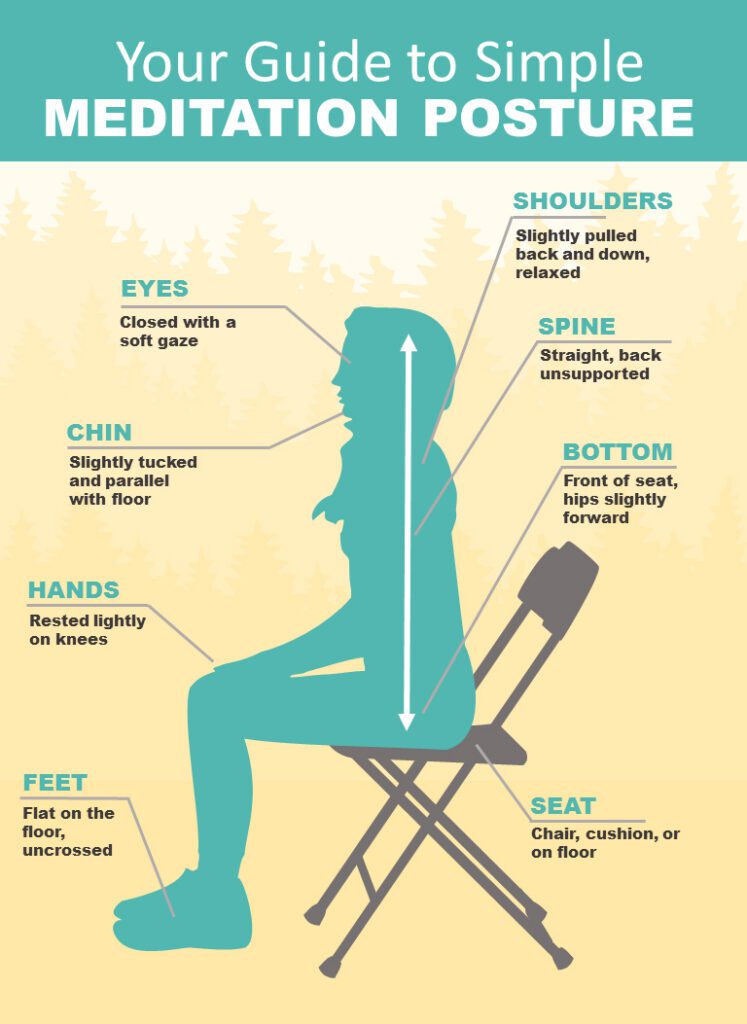
6. ADJUST YOUR POSTURE
Before you begin, review your posture and get comfortable.
Here’s a checklist:
• Adjust any supports you use to help you sit comfortably.
• Your head, neck, and back should be aligned,
leaning neither forward nor backward, nor to the side.
• Your shoulders should be even and your hands level with each other
so your muscles are balanced.
• Your lips should be closed, your teeth slightly apart, and
your tongue against the roof of your mouth,
with the tip against the back of your upper teeth.
~
Later down the Path, there are tongue methods called Khechari Mudra,
used to activate pressure points when the tongue is curled up and back
and pressed as far back and up as possible,
if you are familiar with these techniques, feel free to use them as inspired.

• Start with your eyes closed and angled slightly downward,
as though you were reading a book.
This creates the least tension in your forehead and face.
If you prefer, leave your eyes slightly open,
with your gaze directed at the floor in front of you.
Your eyes will move during meditation, but
when you notice they’ve shifted,
return them to where they were.
Again, later down the Path…
there are practices that involve using the eyes called ocular mudras
to look at the 3rd chakra in the middle of the head, and then later…
the crown chakra, then, the energy point above the crown.
Experienced aspirants should use these when appropriate.
~
• With your lips closed, breathe through your nose in a natural way.
It shouldn’t feel controlled or forced.
• Relax and enjoy yourself. Scan your body for any tension and let it go.
All the activity of meditation is in the mind,
so the body should be like a lump of soft clay — solid and stable,
but completely pliant.
This helps keep physical distractions to a minimum.
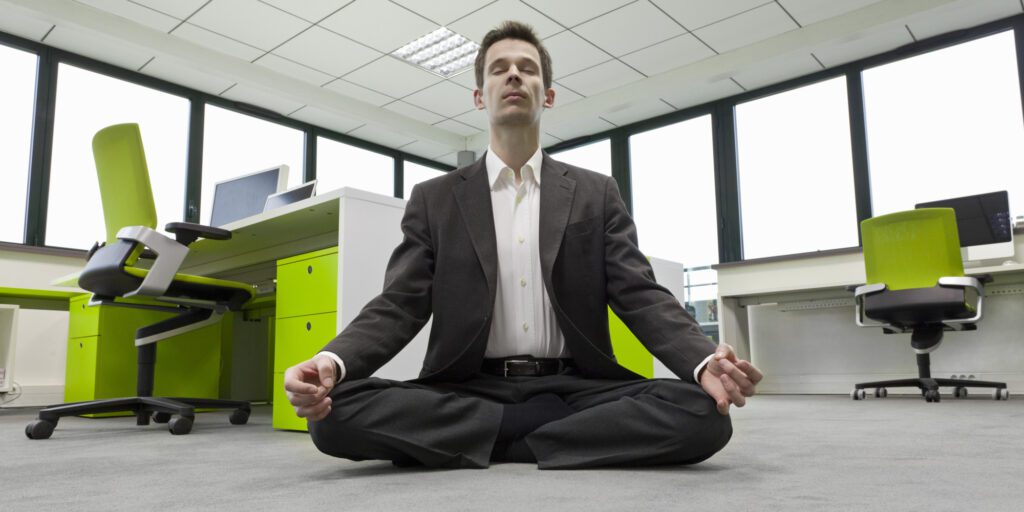
A Gradual Four-Step Transition to the Meditation Object
In this practice,
you transition gently from the free-ranging attention of daily life
to focusing on the breath at the nose.
The transition is spread over four steps.
In each,
you define a specific “domain” or “space” in which you
allow your attention to range freely.
Any object in the space
can serve as the focus of your attention at any moment,
meaning
your focus just moves as it will.
As you proceed from step to step,
you further restrict the space in which attention is free to move,
until you’re finally focused on
the sensations of the breath at the nose.
But as you make this transition with attention, remember to
always maintain peripheral awareness.
Every step in the transition provides a good opportunity
to learn to distinguish between attention and awareness.
Treat this as a serious practice,
not just as a nice way to start meditation.
Use it each time you sit down to meditate,
especially if you’re a beginner.
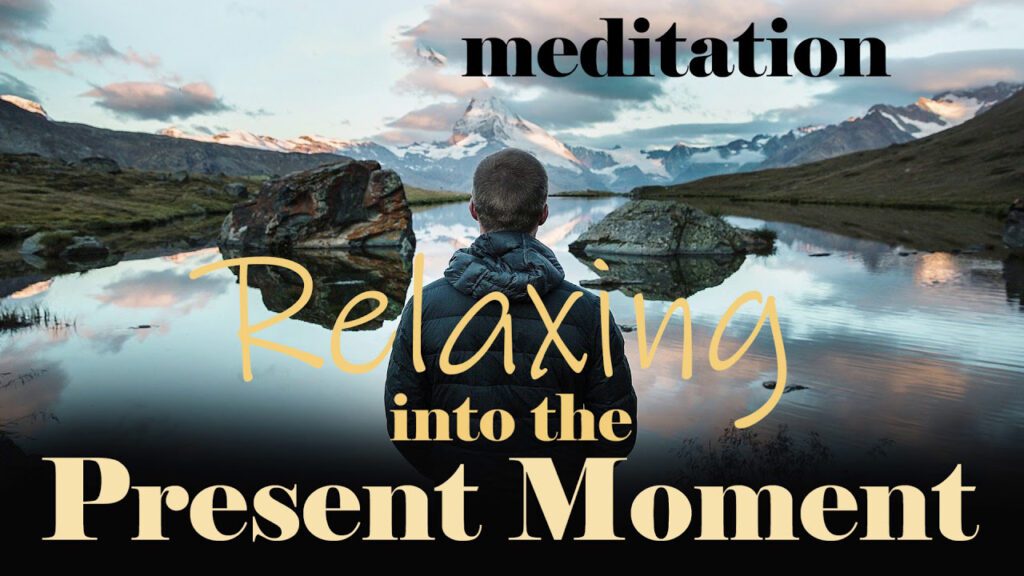
STEP ONE: FOCUS ON THE PRESENT
First,
close your eyes and spend a few moments becoming fully present.
Take in everything presented to the senses.
With your eyes closed,
you’ll find the two main sensory stimuli are sounds and sensations
originating on or in the body.
Open your peripheral awareness fully.
Next,
allow your attention to tune in to and range freely among any of the
sounds, bodily sensations, smells, or thoughts you may experience.
Within this holistic panorama, the one limitation you place on
movements of attention is to remain in the present, here and now.
Staying present is extremely important.
While noises and bodily sensations all occur in the here and now,
thoughts about them (beyond just noticing and recognizing them)
take you away from the present. So,
let your attention go to any sensations that attract it,
but don’t analyze or think about them.
Observe bodily sensations objectively,
not identifying with them as “mine.”
Let your attention move as it will, drawn by the moment – by – moment
arising and passing away of sensory objects
within your field of conscious awareness.
If you find a particular sensation to be pleasant, take a moment to enjoy it.
Let that pleasure condition your mind toward a
state of happiness in the present.
Try to distinguish clearly between the subjective quality of pleasure
and the sense object that triggered it, savoring the pleasure,
not the sense object.
If your mind reacts to something unpleasant,
distinguish between that reaction and the object that produced it,
then let go of the reaction.
You’ll also be aware of all kinds of other mental activity:
memories, thoughts about the future or things happening elsewhere, and so on.
Expect this kind of activity to go on in your mind.
Being fully present means being aware of it,
but not engaging in its content.
Disregard any thought that has nothing to do with the present moment.
Even thoughts about the present should be approached cautiously,
because they can quickly drag you away from the here and now.
On the other hand, some thoughts, such as
how to make your posture more comfortable,
can help you settle into the present.
In general,
mindfully observing thoughts is tricky, so it’s better to focus on
sounds, smells, and physical sensations to avoid being hooked by thought.
A helpful phrase to remember when dealing with distractions of any kind is,
let it come, let it be, let it go
Don’t try to suppress it, just let it come into peripheral awareness.
Don’t engage the distraction or focus attention on it,
simply disregard it and let it be in the background.
Then,
let it go away by itself.
This is a passive process.
There is nothing to “do” but allow these objects to arise and pass away
on their own, moment by moment.
When you find your attention has been captured by a thought,
just come back to the present.
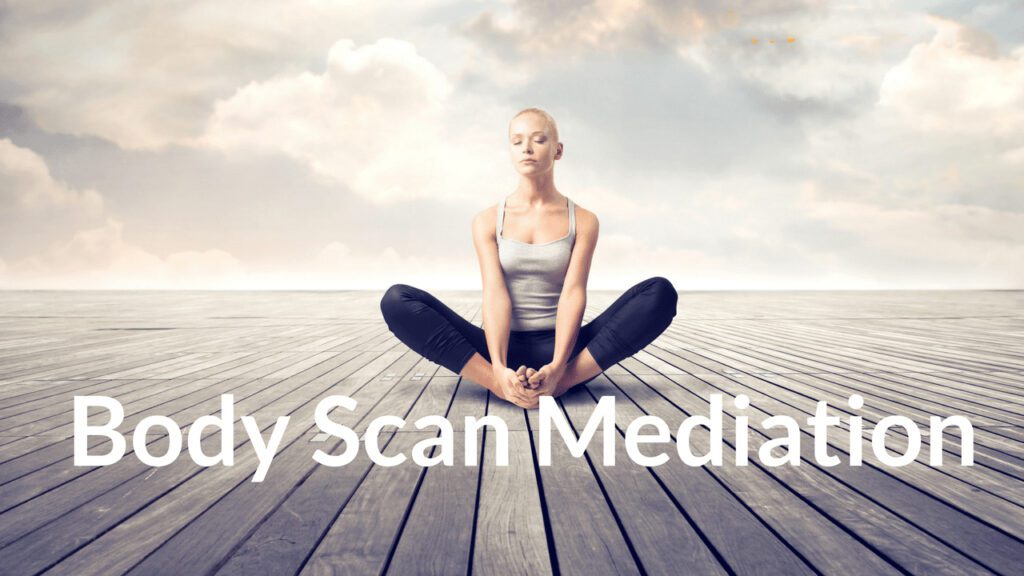
STEP TWO: FOCUS ON BODILY SENSATIONS
Once you have become fully present with every kind of sensory stimulus,
limit your attention to bodily sensations.
These include all physical sensations arising on or in the body, such as
touch, pressure, warmth, coolness, movement, tingling,
deep visceral sensations like a rumbling in your stomach, and so forth.
With your attention limited to bodily sensations,
let everything else slip into the background of peripheral awareness.
Nothing should be suppressed or excluded from
your field of conscious awareness.
Just let sounds, smells, and thoughts keep circulating in the background,
but don’t focus on them.
Let them come, let them be, and let them go in peripheral awareness
while you restrict all movements of attention to bodily sensations.
Whenever you notice your attention going to a sound or thought,
bring it back to the body.
As you pay more attention to your body,
release any tension you find and make final adjustments to your posture.
Again,
notice any pleasant sensations, distinguishing between the sensation as sensation
and your mind’s reaction to it, and
spend a few moments enjoying the pleasure.
These pleasant sensations might include feelings of air moving over the skin, warmth or coolness, and
the softness or supportive firmness of the meditation cushion.
You may experience pleasant sensations deeper in your muscles and joints
as you relax, or warm feelings in your chest and abdomen.
There may simply be an overall pleasant sense of stillness and peace.
Whatever the sensations, enjoy and explore them freely.
For a beginner,
it can be hard to relax at first because your mind is agitated
and your body is unaccustomed to staying still for long.
When you start feeling restless or your sense of contentment fades,
then thoughts, memories, and emotions will begin to stir.
Don’t get annoyed or try to suppress them.
Instead,
return to step one,
broadening your awareness until you become
fully present with everything happening in the moment agai.
In particular,
seek out the pleasurable aspects of the present
and try to reestablish and reinforce feelings of contentment and happiness.
Repeat this process of backing off and starting over as often as needed
until the mind can rest easily
with your attention focused only on bodily sensations.
There is no need to hurry on to the next step.
If you never get past step two during your entire meditation session,
that’s perfectly fine.
However,
sometimes focusing in more can also help you settle down,
so don’t hesitate to try moving to the next step.
You can always return to this one if narrowing your focus doesn’t work.
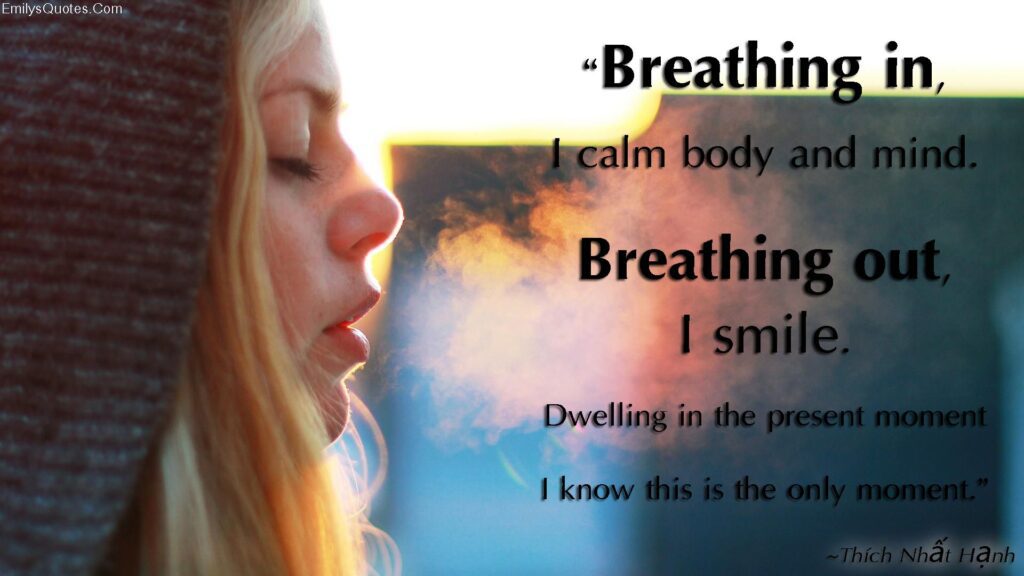
STEP THREE:
FOCUS ON BODILY SENSATIONS RELATED TO THE BREATH.
As you sit quietly observing the body,
your attention will naturally gravitate toward
the sensations of movement produced by breathing,
since little else changes while sitting quietly.
As you tune in,
start paying attention to all the different kinds of breath-related sensations.
You will notice them especially around your nose, face, chest, and abdomen.
You may find sensations of movement caused by the breath in your
upper arms and shoulders, or elsewhere.
Take your time to become familiar with all these breath – related sensations.
In particular,
savor any pleasant qualities associated with them.
You may notice the mind becomes mildly invigorated during the in-breath,
while the out – breath feels more relaxing and soothing.
Without suppressing anything else in your field of conscious awareness,
restrict your attention to these breath – related sensations.
Once you settle in,
start focusing more directly on the sensations of the breath in specific areas.
Closely observe the rise and fall of the abdomen,
then the expansion and contraction of the chest,
then the sensations produced by air moving in and out of the nostrils.
Allow your mind to move freely among the
abdomen, chest, nose, and anywhere else where
you feel breath – related sensations.
It’s important to breathe naturally.
Be a passive observer,
noticing any sensations that happen to be present.
You don’t have to exaggerate the breath to make sensations easier to notice.
If you want to perceive them more clearly,
try imagining that you’re looking at the place where the sensations are occurring.
Let your eyes rest in a position that serves your imagination,
but don’t actually try to direct your eyes to the tip of your nose or your abdomen.
That will just create discomfort.
again,
for advanced practitioners,
there is a meditation technique in the Advaita Vedanta tradition that does indeed involved
staring at the tip of the nose which creates an ocular mudra pressure point bind.
This helps draw awareness to the energy flow at the tip of the nose where air flows.
Only advance practitioners already trained in this technique should use this mudra.
~
Your eyes will naturally tend to rest as though they were
looking at a point a few inches in front of your face.
Nor should you visualize the area in your mind.
Take note of, savor, and even
purposely induce feelings of peace and happiness,
especially as your attention becomes more stable
and you experience more inner calm.
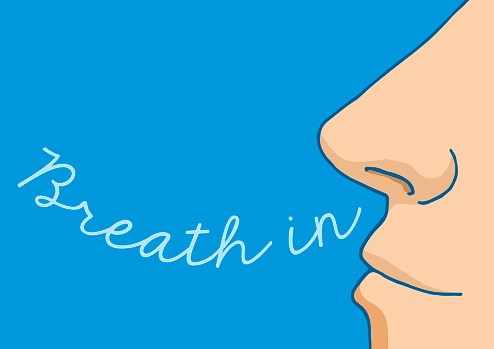
STEP FOUR:
FOCUS ON SENSATIONS OF THE BREATH AT THE NOSE.
Now direct your attention to the sensations produced by
the air moving in and out of your nostrils.
Locate where those sensations are clearest — just inside the nostrils,
at the tip of the nose, on the upper lip, or wherever else.
The area may be as small as a pencil eraser or up to two inches across.
Also,
the location of sensations may not be quite the same for the in – and out – breaths.
Keep your attention on the area where the breath sensations are clearest.
Don’t try to follow the air as it moves into the body or out of your nose.
Just observe the sensations from the air passing over the spot
where you’re focusing your attention.
Remember,
the meditation object is the sensations of the breath,
not the breath itself.
Without intentionally suppressing anything from awareness,
keep watching the sensations of the in – and out – breath.
If your attention wanders, gently bring it back.
And that’s it!
~
From this point on,
the sensations of the breath at the tip of the nose
will be your primary meditation object.
Cultivating stable attention will continue all the way through Stage Six.
Developing exclusive attention
is the final event in the process and won’t happen before Stage Six,
so don’t even concern yourself with it in the early Stages.
For now,
your aim is just to tame the constant movements of attention,
while at the same time trying to maintain peripheral awareness of things in the background.
In other words,
you want to develop stable attention with mindfulness.
Counting as a Method to Stabilize Attention Counting your breaths at the start of a sit
really helps stabilize your attention. If you’re a novice,
you should use this method all the time.
Once you have moved through the four steps and attention is restricted to the breath at the nose,
start silently counting each breath.
Your goal will be to follow the sensations continuously for ten consecutive breaths.
When your attention slips or you lose track of the count, which will happen frequently at first,
just start over again at one.
For now,
consider your attention continuous if you’ve missed neither an inhale nor an exhale,
nor lost count of your breaths.
However, don’t expect perfection.
For a beginner,
you’re doing well if you’re aware of most of each in – and out – breath.
You can set higher standards for yourself as you become more skilled,
but in the beginning, high standards are unreasonable and will only discourage you.
Also,
you won’t be able to focus exclusively (“single – pointedly”) on the breath.
In fact,
trying to do so will only cause your mind to wander more.
So expect to be aware of many other things as you’re watching the breath.
Finally,
you’re not trying for nonverbal or nonconceptual observation at this point.
You can talk to yourself and think about the breath as much as you like while observing it,
as long as you don’t completely lose awareness of the actual sensations,
or lose track of the count.
~
Interestingly,
what you consider the start and end of a breath cycle matters.
We automatically tend to regard the beginning as the inhale
and the pause after the exhale as the end.
However,
if you’re thinking about the breath in that way,
then that pause becomes the perfect opportunity for your thoughts to wander off,
since the mind naturally tends to shift focus when it has completed a task.
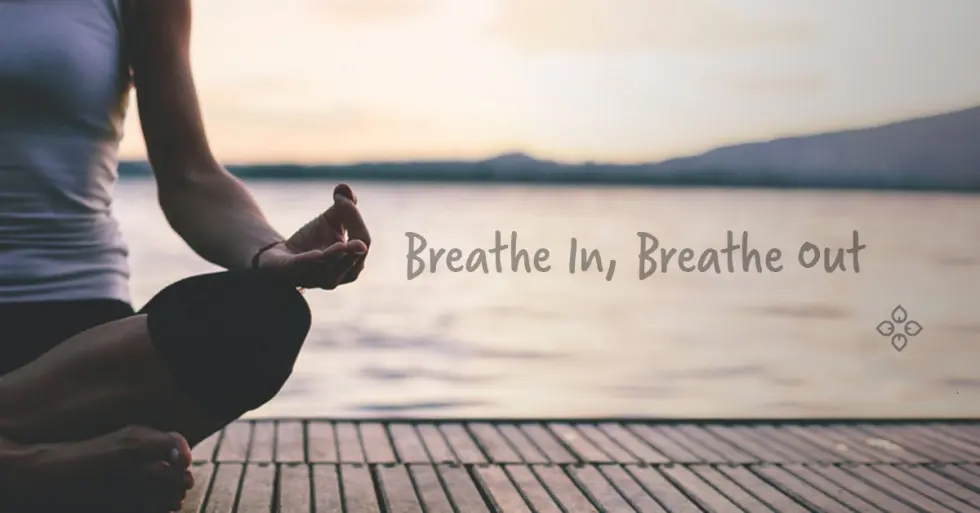
Instead, try this:
consider the beginning of the out – breath as the start of the cycle.
That way,
the pause occurs in the middle of your cycle, and is less likely to trip you up.
This may seem like a small detail, but it often makes a difference.
Another approach is to silently say the number during the pause at the end of the out – breath.
This “fills the gap” and helps keep the mind on task.
If you have started over many times without successfully reaching ten,
change the goal to five.
Before long, ten breaths will be easy.
Once you’ve succeeded in counting to five or ten,
keep observing the breath sensations,
but stop counting.
Counting quickly becomes automatic, and you can
still forget the breath and have your mind wander while continuing to count.
Therefore,
counting beyond ten breaths has little value.
~
The rule is never more than ten, never less than five. However,
if your mind is particularly agitated or wanders again soon after you bring it back,
do another ten – count when you return to the breath.
Also,
if your mind wanders for a long time (several minutes or more), once you become aware of it,
don’t immediately return to the breath at the nose.
Rather,
go back to step two and briefly focus on bodily sensations,
then to step three and focus on breath sensations in general,
and then
start counting breaths at the nose.
Even if you use a meditation object other than the breath,
counting is still a wonderful way to transition from daily activities into
a more focused, meditative state.
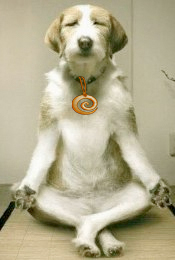
Just as with Pavlov’s dogs,
the mind becomes conditioned over time to counting as a sign to start meditating,
and it will automatically calm down.
Regardless of whether you’re a beginner or an advanced meditator,
I strongly recommend using counting as part of your regular practice.
Counting will give you valuable information on the state of your mind
and the distractions you’re most likely to face.
When you master Stage Ten,
you will have effortless concentration before reaching the tenth breath.
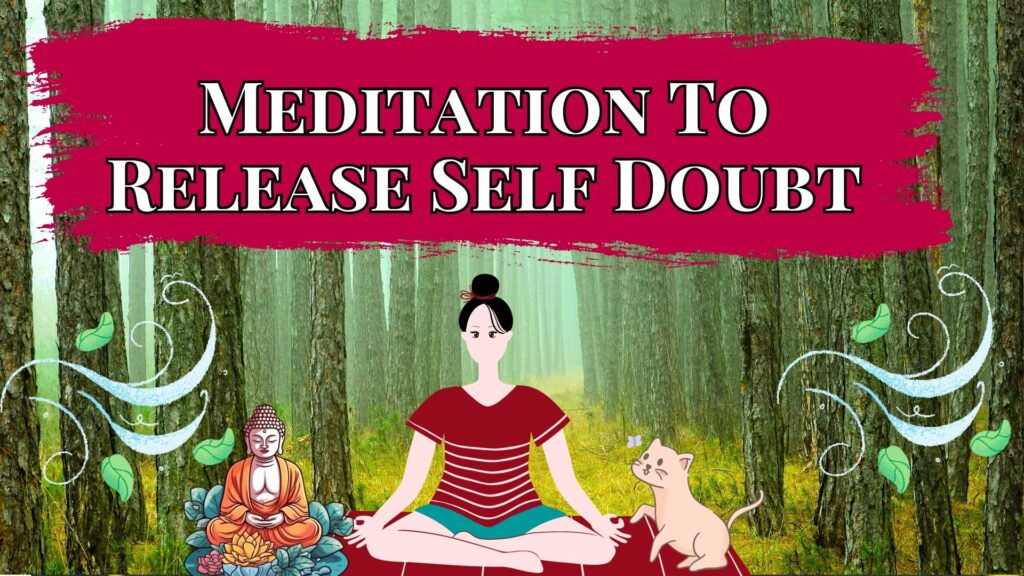
SELF – DOUBT
We tend to stick with activities we are naturally good at
and avoid the ones we struggle with.
When you discover you can’t control your unruly mind,
you may begin doubting your abilities .
“Maybe I’m different in some way or just lack self – discipline.” Or
you might believe you aren’t “smart” or “spiritual” enough for meditation.
It’s easy to think some inherent obstacle is holding you back,
especially if you start comparing your experiences with what other people seem to be achieving.
Yet,
the real obstacle is self – doubt,
which is powerful and can rob you of your enthusiasm and determination
to establish a regular practice.
Without a regular practice,
it will take a long time before you see any real improvement,
which will only create more doubt .
At the root of self – doubt is the classic hindrance of Doubt
explained later in the Second Interlude.
There, you’ll also find
the explanation for how to deal with Doubt.
But the basic antidote is simple:
trust and perseverance,
which requires inspiration and motivation.
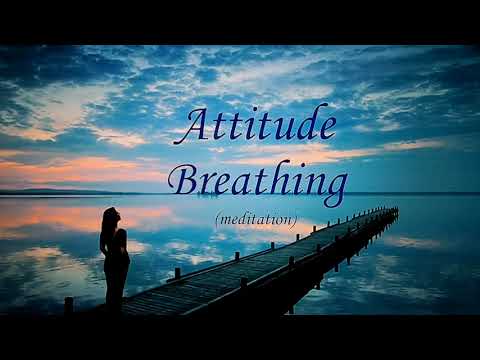
THE RIGHT ATTITUDE
To succeed, we need to approach the practice in a relaxed manner,
free from judgment and expectations.
Although we may start out this way, we can quickly slip into a critical, striving attitude
when faced with problems such as mind – wandering, sleepiness, and impatience.
This attitude becomes the greatest impediment to our continued progress.
When words like “struggle” or “difficult” come to mind, or
if you feel like you’re “trying really hard, but not making any progress,”
you’ll know it’s time to examine your attitude.
~
Meditation is a series of simple tasks, easy to perform,
that only need to be repeated until they bear fruit.
So where is the sense of difficulty and exertion coming from?
We usually describe a task as difficult because we’re dissatisfied with our performance,
which means we’ve started judging.
Your expectations haven’t been met, and
maybe you’re starting to doubt whether you’ll ever succeed,
which can sap your motivation.
You’re not actually struggling with meditating,
you’re struggling with unrealistic expectations and an
idealized image of what you think “should” be happening.
As a result,
it feels like you’re forcing yourself to do something you think you aren’t very good at.
If you believe those feelings, the ego – Self naturally wants to avoid blame.
If you can convince yourself that you’ve been trying really hard,
then the ego – Self doesn’t feel guilty for not meeting its own self-imposed expectations.
You can blame the teacher, the method, or
concoct a story about how meditation isn’t right for you.
The real issue isn’t that meditation takes too much effort, or that
something is innately wrong with you, it’s your judgment and expectations.
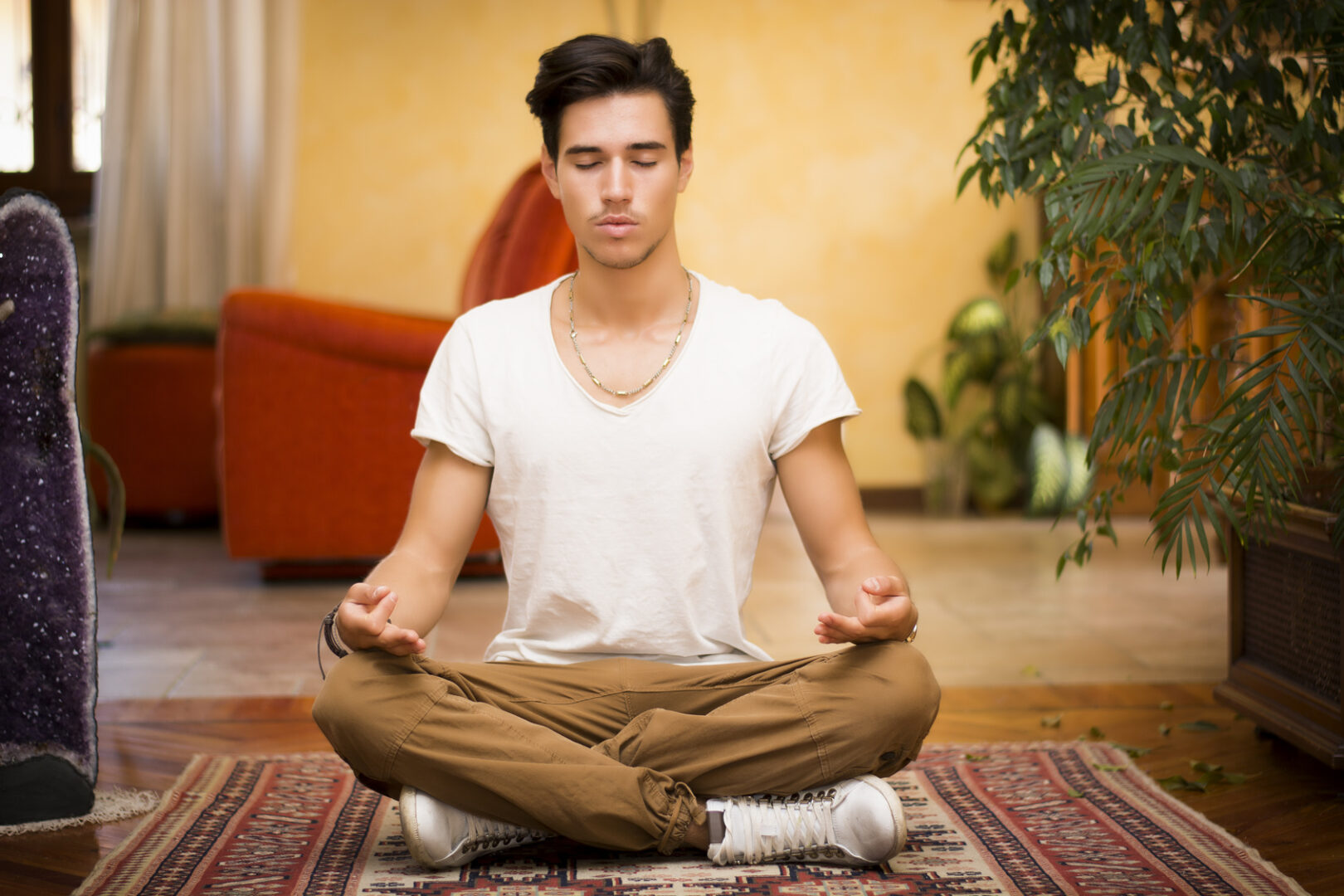
“A good meditation is one you did; the only bad meditation is one you didn’t do. ”
— Stephanie Nash
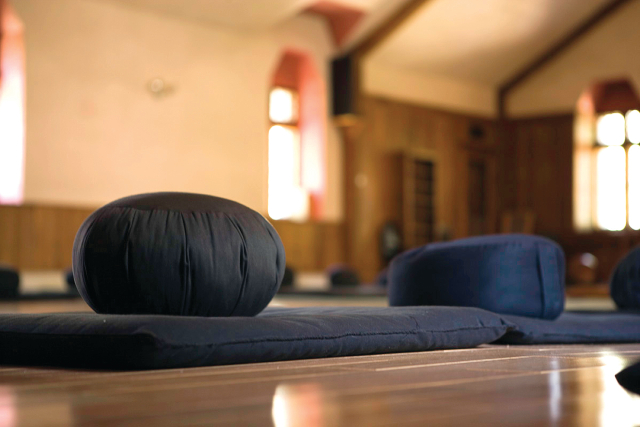
This series of articles highlight and focus on the first 3 stages
of the 10 stage process towards the Ultimate goal of Awakening.
I have come to regard these first three stages as outlined by
Neuro Scientist John Yates… AKA Culadasa
to be the most useful way to learn how to meditate
for Ultimate goal of meditation.
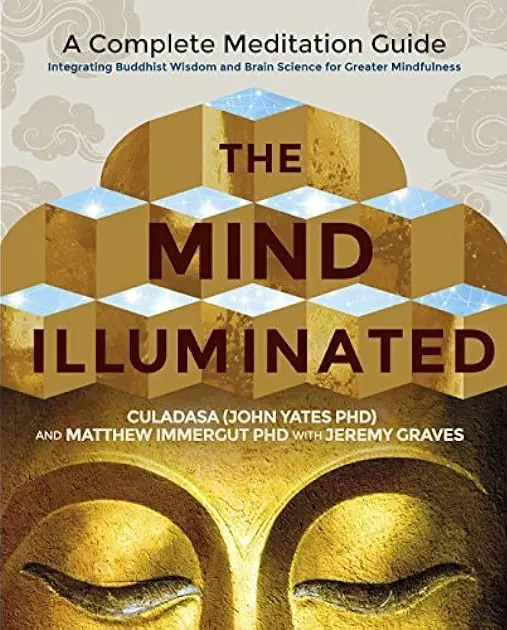
With his neuro science along with his psychology background and lifelong Buddhist Practice,
he has the unique qualifications to bring together the complete Spiritual Path together
in the most thorough way.
This subject has many different traditions and perspectives that for the most part
evolved separately in various locations around the world, and yet,
they all point toward the very same outcome…
Attaining the highest form of human consciousness possible, with names such as…
Enlightened, Awakening, Self-Realized… that all offer the Ultimate goal and Fruition of…
Liberation of pain and suffering.
Beyond these first 3 stages is beyond the scope of what I can effectively share,
but for those so inspired… This book is a must read:
The Mind Illuminated:
A Complete Meditation Guide Integrating Buddhist Wisdom and Brain Science
for Greater Mindfulness
by – John Yates; Matthew Immergut; Jeremy Graves